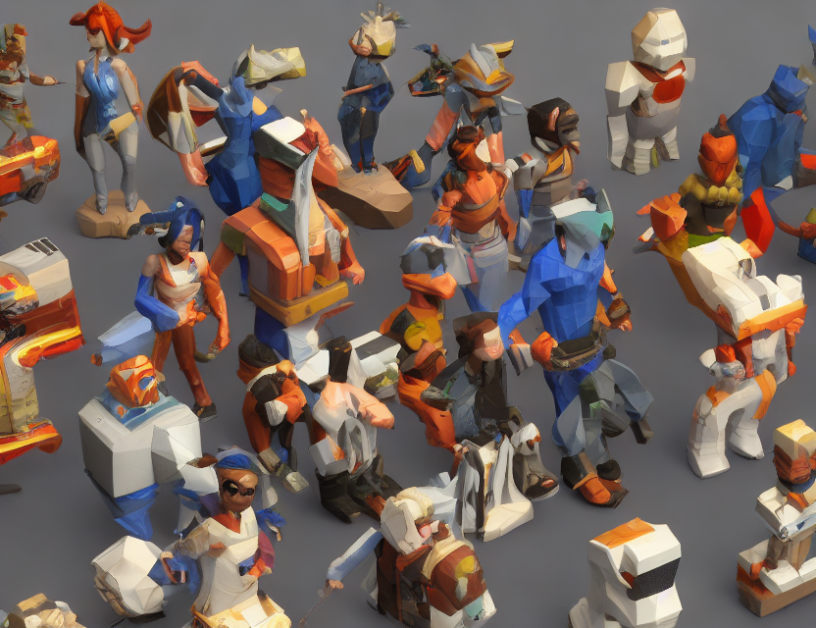In this article, we delve into the realm of text-to-3D generation, specifically exploring the concept of 2D diffusion models. These models have gained significant attention due to their ability to create photorealistic images and videos. We will unravel the complexities of these models, making them accessible to a broad audience.
Observation 1: Facing the Challenges of Facial Animation
The article begins by highlighting the challenges in facial animation, particularly in maintaining realism, details, and ease of editing. The author notes that high-quality facial animation generation requires satisfying these requirements while keeping the model efficient and easy to use.
A Helping Hand: 2D Diffusion Models to the Rescue
Enter 2D diffusion models, a game-changer in the realm of text-to-3D generation. These models are trained on 2D images and use diffusion processes to generate 3D images that match the input text. The author explains that these models have been successful in capturing realistic images and video priors, leading to excellent work in Text-to-Image diffusion models such as Latent Diffusion Models (LDM).
The Magic of Diffusion: Understanding the Core Concepts
To demystify the concept of diffusion, the author uses an analogous scenario involving a messy room. Imagine a room filled with toys and clothes, and you want to restore it to its original state. A diffusion model works similarly, with the goal of restoring the 3D scene from a 2D text description. The author explains that the model iteratively refines the 3D image based on the input text, much like how you would tidy up a room by picking up toys and clothes one by one.
A Closer Look: Temporal Attention Module
The article dives deeper into the Temporal Attention Module, which is crucial for maintaining subject consistency in the generated images. The author uses an everyday analogy of a train journey to explain how the model attends to different frames of the video, ensuring that the resulting image is consistent with the input text.
Observation 2: Keeping the Line Moving
The author highlights Observation 2, where the model tends to align with the middle frame in the early stages of denoising. This alignment helps maintain subject consistency and prevents the model from losing inter-frame continuity. The analogy of a moving line is used to illustrate how the model keeps the line moving forward, ensuring that the generated images are consistent and coherent.
Beyond 2D: Exploring Higher Resolution Images
The article also touches upon the challenge of maintaining inter-frame continuity when increasing the resolution of the images. The author notes that this issue can be addressed by explicit modeling consistency to the anchor frame, which helps the model work better.
Conclusion: A New Era in Text-to-3D Generation
In conclusion, the article provides a comprehensive overview of 2D diffusion models and their applications in text-to-3D generation. By demystifying complex concepts through everyday language and engaging analogies, the author successfully conveys the essence of the article without oversimplifying. The summary highlights the significance of maintaining subject consistency and inter-frame continuity in high-quality facial animation generation, positioning 2D diffusion models as a promising solution to these challenges.



